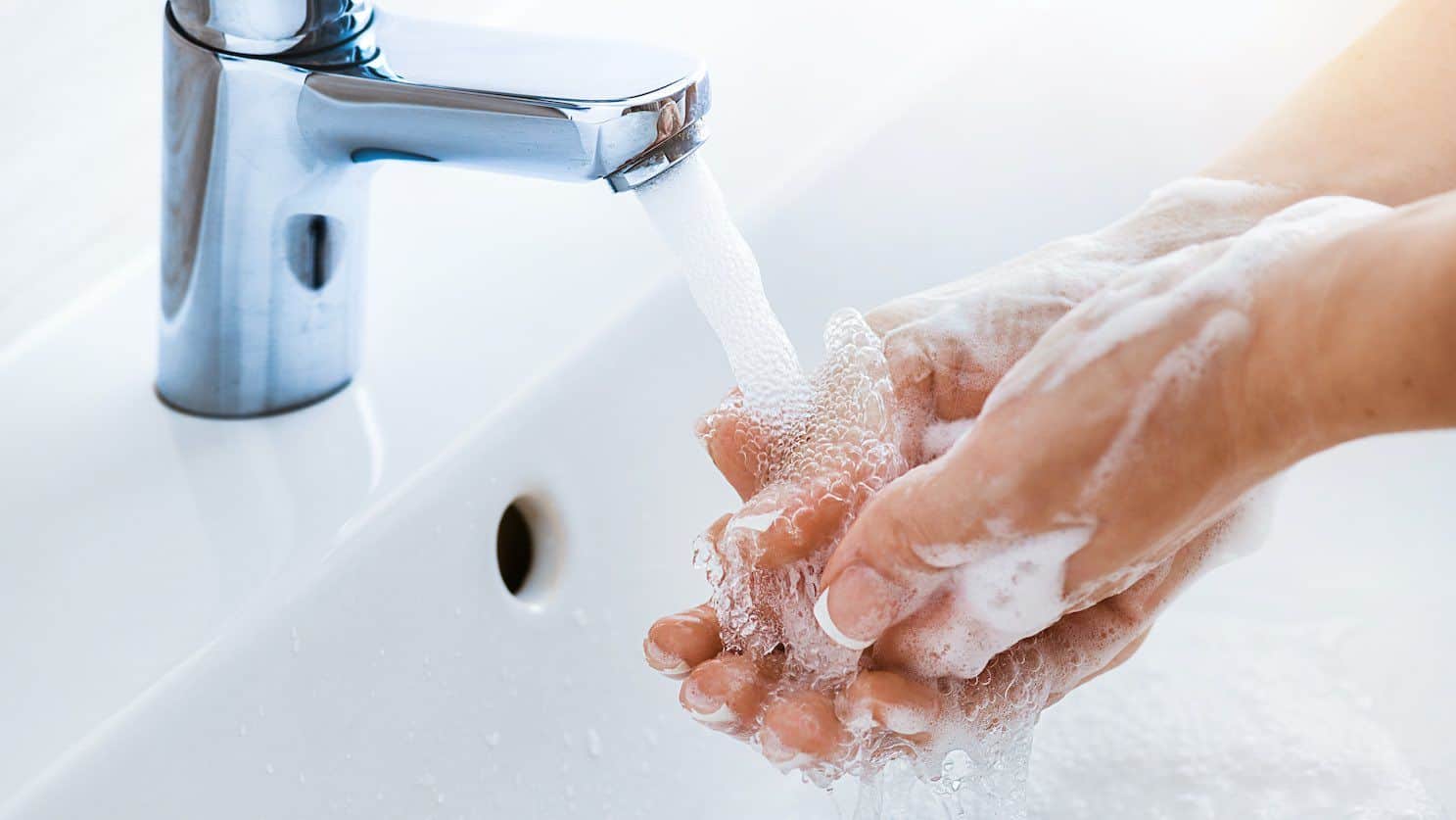Soap is humanity’s strongest ally in the new reality of COVID-19.
Readily available and easy to use, soap has bacteria and virus-killing properties that make it our most valuable tool for minimising contagion. In fact, washing your hands frequently is the number one recommendation of the World Health Organisation’s list of best protective measures against the novel coronavirus.
We’re all in this together. This is not the time to be a maverick. Team Costhetics urges everyone to play by the rules laid out by WHO and follow news alerts from the Australian Government’s Department of Health. To help you stay compliant, this article explores
- The incredible power of simple handwashing
- Tips for moisturising dry, dehydrated hands
Soap, Historical Ally of Human Health
When and how the concept of soap came into existence is questionable. What is unquestionable is that it changed the shape of human history. Whether the product of ash and fat washed into bodies of water after animal sacrifices, or the result of boiling and mashing certain plants, frothy solutions were quickly identified as useful for cleaning skin and fabric. Soap was born.
Soap Has a Superhero Power
Ordinary soap (vs industrial soap) is generally considered safe and gentle, unless you’re a microorganism. Combined with water, soap turns into a killer. It vanquishes bacteria and viruses, including the novel coronavirus by rupturing their structure. Go soap!
Here’s where things get interesting (if a little ‘science-y’). Soap’s secret power may be related to its unique hybrid structure. Soap molecules look like pins, with a top and bottom. The top (hydrophilic head) bonds with water while the bottom (hydrophobic tail) bonds with oils and fats. When soap is dissolved, the molecules are suspended in water where they can interact with other molecules and ultimately form micelles (bubbles). In this formation, the molecules keep their tails tucked inside and their heads pointed outward. The lipid membranes of certain bacteria and viruses (including COVID-19) resemble double-layered micelles. These membranes carry the proteins necessary to support viral infection and keep bacteria alive.
When you wash your hands, you introduce soap into the equation where it surrounds the microorganisms. In their natural desire to evade water, the tails of soap molecules wedge themselves into the lipid membranes, pushing them apart, destabilising their function, and rendering them harmless.
Yay soap!
Soap also makes it more difficult for the chemical bonds in bacteria and viruses to stick to surfaces. The same micelles that break down lipid membranes corral fragments of viruses and bacteria, ensure that when you rinse your hands, all the trapped, damaged, and dead invaders are washed away.
Yay water!
If you’re not certain that you’re washing your hands correctly, Costhetics found a fun video created by The Wiggles and UNICEF. Even Neil Diamond has gotten into the game with a charming satire of Sweet Caroline.
What Soap Has Hand Sanitisers Don’t
Hand sanitisers are everywhere. You see them at the gym, the supermarket, and in just about everyone’s bag or pocket. “Hand sanitizer was one of the most sought-after products on the market, even before the coronavirus outbreak,” reports Vox in a report on the marketplace. Statistics agree:
- Demand for hand sanitiser rose 1,400 from December 2019 to January 2020
Sanitisers are great. American’s Centres for Disease Control say sanitisers with a minimum of 60% ethanol, can destabilise the lipid membranes of viruses and bacteria. What sanitisers can’t do, however, is dislodge microorganisms from the skin the way soap can. In fact, according to the TGA’s monograph on hand sanitisers, “Directions for use for alcoholic hand rubs should include a statement to the effect that the hands should be washed with soap and water before using the product.”
The CDC also notes that people don’t always use sanitiser correctly.
- Dry your hands
- Apply sanitiser to one palm
- Rub it over the surfaces of both hands until they feel dry
- Don’t wipe off excess sanitiser as you’ll interfere with the product’s efficacy
5 Hand-Savers to Keep Hands from Drying Out
Sooner or later the COVID-19 pandemic will run its course. When that happens, we’ll be holding hands, patting cheeks, and embracing one another with wild abandon. To help you keep your hands smooth and soft for that day (and for now, too), Costhetics has put together a five-pack of tips from skin specialists around the world:
- Some Like It Hot, But Not You – The water you use to lather up your hands doesn’t need to be hot. You’re not sterilising your hands; you’re cleaning them, and soap is doing the heavy lifting. Stick to lukewarm water and you’ll avoid stripping your hands of their natural oils.
- Stay Away from Bars – We’re talking soap bars, not your favourite pub. Ingredients added to soap to create bars often have a high pH, which robs skin of its moisture. Instead, go with liquid soaps, especially those with a creamy consistency. Skin-loving ingredients include glycerine and lanolin.
- Scrub-a-Dub-Don’t – It’s one thing to wash your hands and another thing to scrub them until they’re red. Hand-washing time is a good opportunity to take a deep breath, let it out, and enjoy a relaxing, virus-killing hand massage.
- Creamy is Dreamy – Water on the surface of your skin draws water from deeper layers in your hands. To keep all the water-y goodness where you need it, apply a moisturiser immediately after your wash.
- Give it the Glove Treatment – In the same way masks help hydrate facial skin, gloves can do the same for your hands. After washing your hands and applying a moisturiser, slip on a pair of cotton gloves for a few hours or overnight. The extra boost of hydration will do wonders.
Costhetics remains optimistic about the future, and we hope you will, too. Remember what author/lecturer Leo Buscaglia says, “Worry never robs tomorrow of its sorrows, it only saps today of its joy.”
